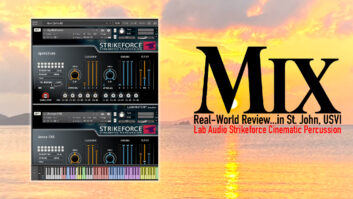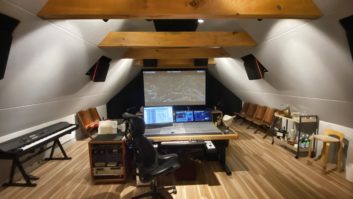If there is one thing you can say about the digital age so far it’s that there has been a remarkable level of indifference toward the basic information that surrounds a musical project. And I’m not just referring to the delivery side and the rush to make music consumption as convenient as possible.
There seems to be an equal amount of indifference about data collection and verification at the source—the session information gathered during the various stages of production, much of which is an important monetizing factor of a release.
These days, artists and engineers seem to take it for granted that the information about who contributed to a recording will be collected by somebody (the assistant engineer?) and located somewhere (probably in the DAW’s project folder, right?), and that it can be easily retrieved when needed. The reality, however, is that the details are often cobbled together long after the fact, allowing for errors that can have serious financial consequences in the project’s earning potential.
So who is responsible for gathering the information, and what should it be? (You can probably guess the answer to the first part of the question.)
In the video from a talk entitled “Recording Metadata, Credits, and Your Future” (available on GrammyPro.com), Maureen Droney, Senior Executive Director of the Recording Academy’s Producers & Engineers Wing, reminds us that collecting the credits in the studio used to be an integral and important part of the assistant engineer’s job. “Sometimes the assistant engineer was the only person who knew which solo got used because you were the one there logging all of that stuff; or who played on what and what was the final take.”
These days, however, it’s less likely that a studio’s staff member will keep detailed notes of your session information unless you specifically ask (and perhaps remind) them to do so. And, unfortunately, the track names in the DAW do not provide enough information to fully meet your commercial needs because there is a lot more at stake than simply gathering names for posterity.
In addition to providing revenue for the composer, lyricist, publisher and label, among others, these important details—what I will refer to here as credits and recording metadata—are a potential source of earnings through SoundExchange for producers and engineers, as well as so-called “non-featured performers” (background singers and backing musicians). The information is also used when fulfilling contractual obligations between rights owners and labels or distributors, either now or in the future for reissue or licensing. And metadata allows for music discovery—not just for consumers, but also between professionals. Moreover, it serves as a way for the Recording Academy to verify eligibility for its voting membership, as well as for Grammy nominations and awards.
Many find the term metadata intimidating, as if it alludes to an impenetrable set of numbers. But in this case, the information you need is similar to what you would find on a master-tape box or an album’s liner notes: Every entity involved in the project should be correctly accounted for, as well as session details that are relevant to future monetization (for example, the use of high-resolution formats).
While there is no set standard for exactly what information should be included in the credits and recording metadata as of this writing, a consortium known as DDEX (Digital Data Exchange; ddex.net) is currently working toward one. Made up of music licensing organizations, media companies, digital service providers and “technical intermediaries,” DDEX’s primary focus is on digital distribution. The success of such distribution, of course, relies on accurate data collection from the beginning, and that’s where we come in.
This spring, the Recording Academy’s Producers & Engineers Wing released an interim set of recommendations for which credits and recording information should be collected for a given project. Much of it you would already have if you were using the Session Documents found on the P&E Wing’s page “Tools, Tips, Guidelines and Recommendations.”
For example, there are the basics—Artist, Song Title, Label, Project Number, Date, Studio(s), Engineers (recording, mixing and mastering), Assistant Engineers, Producer, Production Assistant, and source formats (recording, mixing and mastering). To this, you will also want to add the performers and their instruments, and the names of any arrangers, management, publishers and PROs related to the project. Other important details in the P&E Wing’s recommendation include the country where the recording was made, whether the production contains samples, and the assignment of identifier codes (ISRC, ISNI, ISWC and PWC) when available.
Ultimately, all of these details would be entered into a document that is associated with the project and easily accessible by the participants, in a format that is universal (for example, xml). Until this becomes a reality, I encourage you to create your own credits and recording metadata form (whether in .txt, .doc, or Google Doc format) using the info above. Then, make it easily accessible so that you keep it up-to-date as your projects progress.
In the meantime, the Robair Report will visit this topic again as more specifics about credits and recording metadata are announced (hopefully around the time of the AES show this fall).







